TOGETHER
With you, we make a difference


With you, we make a difference

A conversation with WA’s Australian of the Year
Professor Helen Milroy
Hon Julie BishopSupporting women in research
Music to our ears
Djaalinj Waakinj program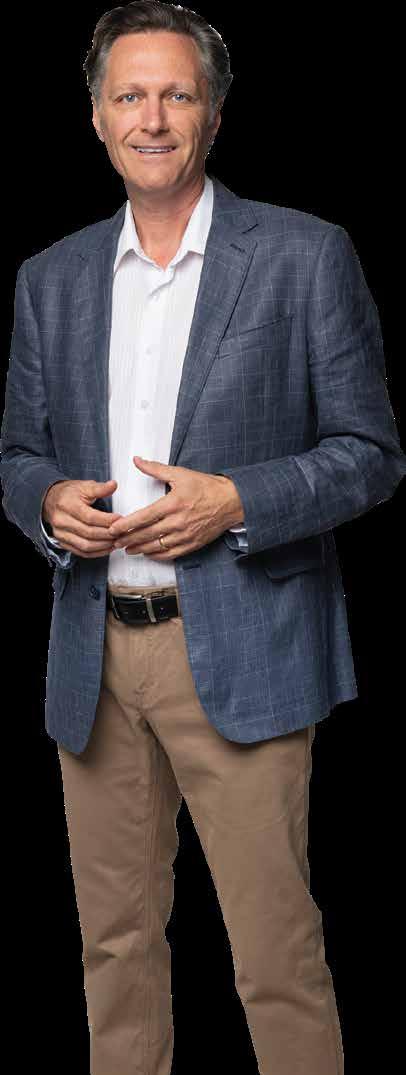
Part of what makes Telethon Kids so special is our community and that is what this magazine celebrates. It celebrates the community in its many forms. Our volunteers, our fundraisers, our research participants. And many in our community choose to make a donation, especially as we head towards the end of the financial year.
It goes without saying that we are deeply grateful for all kinds of giving — from gifts in Wills, gifts that are directed to specific areas that mean something to you personally, as well as gifts we like to call unconditional.
For us, unconditional giving is a donation, whatever the size, to Telethon Kids to direct as needed. It says to us you are backing us to deliver on our collective mission — discovering, preventing and curing childhood diseases and disorders.
With unconditional giving, you give us the capacity to pursue the most ambitious, innovative ideas. Ideas that create impact and change kids’ lives not just here in Western Australia but around the world.
You’ll get a sense of that in Shannon Simpson’s story. As an Associate Professor leading the Child Lung Health team, her ultimate ambition is to reverse the lung disease in prematurely born babies, so they can lead long, fulfilling lives.
Shannon understands giving can propel her research forward. And as she strides towards her research goals, imagine the impact a community of givers could have
on these kids, as they grow into healthy adults and become leaders of future generations. Unconditional giving can help our researchers take a leap when otherwise they might not have been able to so.
And what does that mean to you? As someone who trusts us, as a research institute, to direct your generous gifts to where they’re needed most, it means you’re backing the work we’re doing. Your unconditional gifts power our research. And you become part of the story that we’re creating for future generations of happy, healthy kids.
We can’t thank you enough for that unconditional trust.
 Professor Jonathan Carapetis AM Executive Director
Professor Jonathan Carapetis AM Executive Director

In May it was wonderful to be able to host in person our first Hopscotch event this year. This was an exclusive opportunity for our community of donors who give $500 or more to Telethon Kids annually. It is their generosity that helps power our research so that kids can grow up happy and healthy.
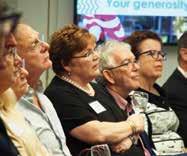
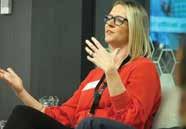
Our evening saw Prof Jonathan Carapetis host a timely discussion about COVID-19 vaccines, where he was joined by Dr Lea-Ann Kirkham and Dr Chris Blyth, Co-Directors of the Wesfarmers Centre for Infectious Diseases and Vaccines.
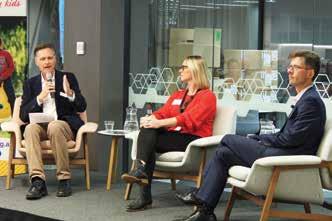
It made for a captivating Q&A conversation, with Hopscotchers given the opportunity to hear their questions answered by the panel who provided candid expert insights.
We plan to host more Hopscotch events this year that will explore other big topics Telethon Kids is working on. Everyone is welcome to join our giving community. To learn more or make a gift, visit giving.telethonkids.org.au or via Erin.Hurson@telethonkids.org.au or 08 6319 1444.
Q. Tell us about your beginnings — how did they shape you as a woman, a scientist, and a mother.
For Professor Helen Milroy, stories are a driving force in her life.
Growing up as a descendant of the Palyku people of the Pilbara, Helen embarked on a career in science, which saw her become a GP, forensic medical officer and psychiatrist. Now, she works as a researcher and co-director of the Embrace mental health team at Telethon Kids.
As an incredibly successful individual with a myriad of achievements to her name — Australia’s first Indigenous doctor, the first Indigenous commissioner for the Australian Football League, commissioner on the biggest Royal Commission in the country (Royal Commission into Institutional Responses to Child Sexual Abuse), and WA Australian of the Year 2021 — Helen is now writing her own stories for children, which sees art become therapy for both author and reader.
As Helen tells her story to you, read and learn about the woman we are so thrilled to have in our team of researchers at Telethon Kids.
My ancestral homelands are in the Pilbara region, around Marble Bar and Port Hedland and I’ve got relations in a few of the ancestral groups in the region.
I was quite fortunate as I got to be together with my family growing up — had my mum and my grandma with me.
My grandma was the sweetest, loveliest woman, and yet I think back as an adult about how badly she was treated by society. Those influences led me to want to do more for my community, particularly children.
My interest always rested with kids and trying to make a difference for their lives as best we can.
We’re only here because of the generations that came before us. We learn from the generations that did things for our benefit, that laid the foundations for us to do better. And I think that’s what we all try to achieve. To make things better, to make sure our kids don’t struggle the same way we did.
The attitude in my family was that you can do whatever you want and be whatever you want. To explore and be a kid and be supported in a way that doesn’t make you fit into a mould, is a good thing. I think sometimes we have too many things that stop kids being able to dream and use their imagination.
Q. What inspired you to study medicine and embark on a career in psychiatry, which has now led you to becoming an eminent researcher in children’s mental health?
It was a natural aptitude I had for the field, but it was also the world and family I was brought up in that led to finding out things for myself. My grandmother and my mum were pretty inventive people — they worked their problems out for themselves.
When you are embedded within the natural world and have a lot of observations about how things work — the relationship between us and nature and animals — it naturally leads you into something like medicine, where you get to find out about people’s stories and how they were put together.
It’s a great attitude to have in science – looking for innovations and solutions that will make a difference creates a lifelong learning.
Q. You’ve been a GP and a forensic medical officer, among other things, but did you ever think you would become a researcher?
I think I always thought I was a researcher! For me, it was a natural progression through different stages in my career.
My main emphasis early on was getting that clinical experience and building confidence. Alongside that I did a lot of policy and education work. And then you get to a point where you think ‘there’s all these things we still don’t know enough about’.
This desire to work these things out for yourself means you follow a research path. When you can combine things together – a clinical focus and a research focus, along with translational abilities through policy – it builds up this more comprehensive approach overall.
Q. What are some of the challenges and opportunities you’re facing in the childhood mental health field?
We haven’t done enough for child mental health and I want to do more.
I hope we bring about a greater level of wellbeing for kids and that we can say we did the best we could.
There hasn’t been a good understanding of what child mental health is all about because it’s hard for the community to get its head around what a mental health challenge in a young child would be.
We have to start taking children seriously and not ignore their struggles until they’re grown up.
All the evidence points to the fact we can stop these problems getting worse if we get in there early enough. We tend to watch and wait, then intervene. And that’s an outdated model.

Q. You’ve had a long relationship with Telethon Kids over the years — what keeps you coming back to work with the Institute?
Telethon Kids has been an amazing Institute in WA with a lot of national and international collaboration. It’s a world-class institution with some unique data sets and linkage in WA. Being able to utilise the strength that we have here is a great opportunity for researchers.
The Institute has a lot of different sorts of people with skills working across many areas, so the prospect for broader collaborations is possible.
I co-direct the Embrace team at Telethon Kids, which is still developing. And we’re seeing this collaboration get better over time. The more you know people and understand their skills, the more you can make a valuable contribution. Because everyone brings unique perspectives to their research.
Normally, you wouldn’t put a psychiatrist with a burns expert, but suddenly through the Institute you have this potential for collaboration! Having this big network under the one umbrella is such a unique opportunity.
Q. What’s your ultimate vision? What do you hope to see over the course of your career and lifetime, in childhood mental health?
My vision is that every child in society can thrive. I want to make sure our vision of happy and healthy kids also includes their wellbeing.
Bringing about their wellbeing early in life and throughout development will not only be our greatest achievement but it will mean the future will take care of itself. If we can put in all that effort up front across the developmental lifespan
until these children are adults that can stand on their own two feet, then we’ll achieve a great deal.
Our society wants people who are innovative, compassionate, caring, happy citizens — and that all starts early in childhood. I’ve always said that the nation’s greatest asset is our children.
Q. Stories make up a big part of your life — they’re woven throughout your history, your work, your passions and your future. How do you they shape you?
When you think about it, stories are the oldest form of learning.
Before we put words on paper, we understood life through stories. They’ve been with us forever, they’re part of our shared humanity.
We know that stories help children understand themselves and others; they can help with literacy, language and finding out who they are and how they fit into the world.
They’re a much more meaningful way to work with children and families, because children are often pigeon-holed with labels in a negative way. Sometimes it’s hard for children to express how they’re feeling, but when they see themselves in a story, they don’t feel so alone.
At the end of the day, we’re all born into stories — our generational, personal histories, our future hopes and dreams.
I’ve had some amazing opportunities. Some incredible and profound experiences. They’ve helped me see things differently, and I’ve learnt from every opportunity I’ve been given. I’m grateful. It’s been a real privilege to be in a position to hear and share people’s stories.
According to Helen, creativity, artwork and storytelling are absolutely essential for self-care. This is why she spends her spare time writing and illustrating books for children. Helen says that sometimes letting creativity soar can also help with intellectual work.
Helen has been writing children books with animals that represent different traits and characteristics. She says if a child can identify with a character and say ‘yeah I’m just like that!’ it’s a very positive way for them to see themselves and their place in the universe.
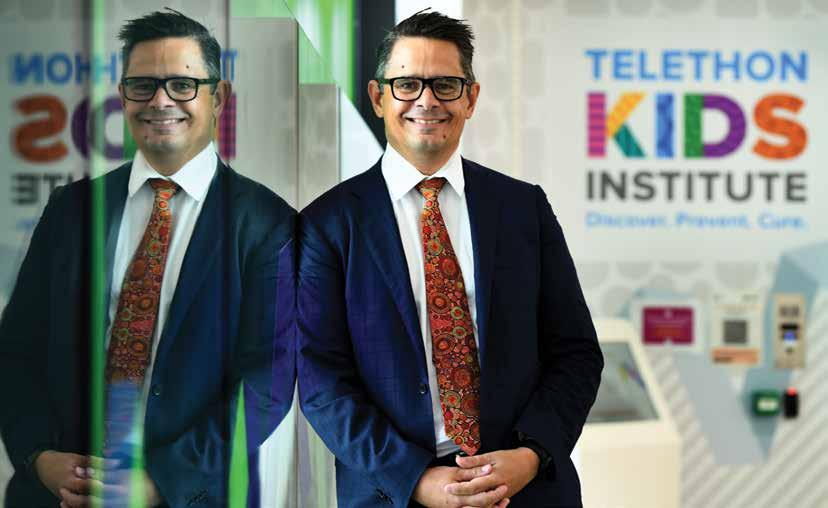
Former West Australian Treasurer, Hon Ben Wyatt, has accepted his first position since retiring from political life — a position on the Telethon Kids Institute board. Ben brings a financial and cultural lens to the importance of child health.
“Like many West Australians, I’ve been so impressed by the range of research that comes out of Telethon Kids,” he said.
“The Institute’s focus on working in partnership with communities and families to improve the trajectories for Aboriginal children is particularly important for me.
“We cannot accept or ignore the continued disparities where our kids often start way behind other Australian children in terms of health and opportunities. We must do better, and we need high quality research along with highly trained Aboriginal researchers to help lead that change. I know this is a top priority for the Institute.”
Val Swift, Project Coordinator and Aboriginal Cultural Advisor for the Cockburn Djaalinj Waakinj (listening and talking) ear health program, says she’s really excited about Ben’s appointment. “He’s an Aboriginal West Australian who is interested in ear health. I’m really excited to have him on the board, knowing that he’ll champion the cause.”
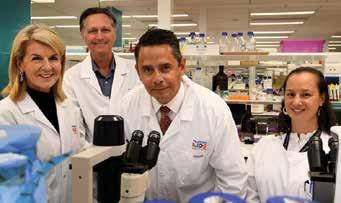
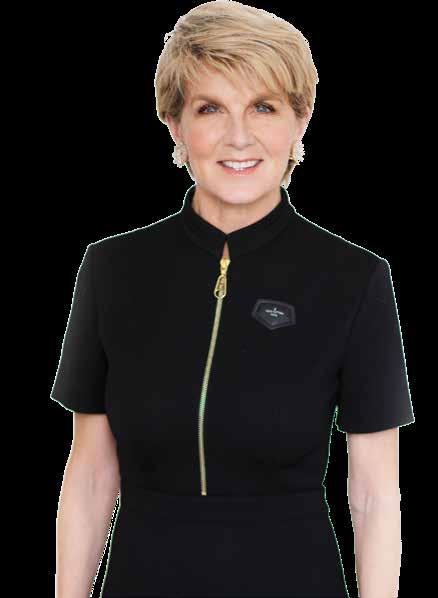
As Chair of the Telethon Kids board, the Hon Julie Bishop plays an integral part in the Institute’s leadership. But it was a deeper understanding and desire to support the brilliant female researchers that saw Julie offer a chance at inspiring the next generation of leaders.
The Julie Bishop Female Early to MidCareer Researcher Award offered funding of $50,000 to be used in a way that would best support the successful applicant. Equally exciting for the applicants was the opportunity to have mentoring sessions with Julie.
“I’ve been passionate about the work that Telethon Kids Institute does for a very long time, and yet through my political roles, including Minister for Science and Minister for Education I was aware of challenges facing career researchers — particularly women — who face a whole range of issues that make it difficult to progress in a trajectory with their research career,” she said.
After an overwhelming number of applicants who seized the opportunity to be considered, a final 10 were shortlisted and four interviewed by a rigorous panel. Ultimately, it was Dr Amy Finlay-Jones who was the successful recipient.
Amy is the team leader of the new Early Neurodevelopment and Mental Health team, and is also a Starlight Research Fellow and a Senior Research Fellow in the FASD Australia Centre of Research Excellence.
Passionate about supporting the wellbeing and quality of life of young people with chronic illness and disability, her research is strongly focused on translational science in child development and mental health trials.
“It’s really wonderful to have such a champion for women in science as our chair,” Amy said.
“It was wonderful to know there is such a recognition of the strength of the women researchers at the Institute and the acknowledgement of the value in this space.”
Amy will use the generous award to maximise the value of Julie’s guidance, build her own capacity as a leader and to nurture the development of her team, and to support the team’s ability to execute world-leading research and translation. She’s also keen on bringing some international speakers over for a seminar series in early childhood development and global mental health and health equity.
“We are very ambitious at Telethon Kids and Amy exemplifies that with her commitment to bringing people here so we can learn from international speakers, but we can also collaborate with them.
We are looking forward to Amy going on to do more amazing things and be a true research leader that I know she has the capacity to be,” Julie remarked.

At Telethon Kids, we are committed to supporting the capacity of our female researchers to become leaders at Telethon Kids. We are proud recipients of the Bronze Award at the Science in Australia Gender Equity (SAGE) Athena SWAN Awards which recognises the commitment the Institute has made to supporting women, trans and gender diverse individuals in STEMM fields and encouraging equity and diversity across the Institute. Our Gender, Equity, Diversity, and Inclusivity (GEDI) Council at Telethon Kids helps oversee and guide the rollout of our Athena SWAN action plan as well as to deliver and advocate for initiatives that make Telethon Kids a more diverse and inclusive workplace.
We are always on the lookout for ways we can genuinely support our emerging leaders. Connecting our donors to our female researchers, like the Julie Bishop Award, is a powerful way of you being a part of their story, and providing them capacity to build their research vision, their teams and ultimately improved outcomes for our kids.
We have a number of donors who support our researchers, at all different levels, and the connection is what makes it so special. It is an opportunity to learn more about their research and its impact in our community.
There are various ways you can support a researcher on their journey. If you are interested in learning more about supporting one of our female researchers, call Alecia on 63191109 or email alecia.benzie@telethonkids.com.au
Introducing a community-led ear portal program that’s changing lives.
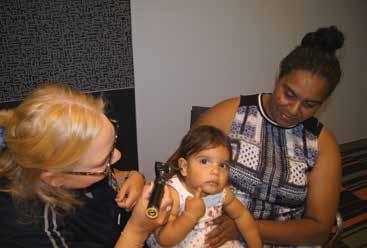
Participating in school, storytelling and everyday life is something lot of us take for granted. But when you have persistent ear troubles at an early age, every aspect of your early development is affected.
This is the reality for many Aboriginal children suffering recurrent or chronic middle ear infections called otitis media (OM).
Close to 40 per cent of Aboriginal babies begin to develop middle ear infections between two and four months of age. By six to eight months, this increases to over 50 per cent.
When left untreated, ear infections can affect the language development that is so crucial to the first three to five years of a child’s life, and they can even lead to permanent hearing loss.
For Aboriginal kids, engaging in family yarns and storytelling, along with cultural dance and music, is integral to Aboriginal culture.
Besides newborn hearing screens which pick up deafness, there are no hearing checks performed without cause before a child enters school –leaving those fundamental language development years unchecked.
The Djaalinj Waakinj (listening and talking in Noongar) Ear Portal Program via Telethon Kids is a first of its kind health program in Cockburn and helping change that story.
After previously researching the prevalence of middle ear infections, the team is now focussed on how to fast-track diagnosis and treatment, while trying to understand the factors behind the prevalence.
Already, the program is seeing overwhelming progress. Average waiting times for diagnosis have dropped from two years to just 10 days, with many children already going on to receive immediate surgery to restore their hearing.
Val Swift from the Wesfarmers Centre of Vaccines and Infectious Diseases, based at Telethon Kids — who started on the project as a research assistant and project coordinator — took on the role of Aboriginal Cultural Governance Advisor. She coordinates a 12-person Aboriginal Community Reference Group comprising of Elders from community that co-designed and continues to govern the program in partnership with Telethon Kids, Perth Children’s Hospital, Cockburn Integrated Health, and the WA Health, MK Aboriginal Corporation, Babbingur Mia, Boodjari Yorgas and CAHS Community Health.
“Many Aboriginal kids are behind the eight-ball when they start school, so adding in the disadvantage of hearing loss means that education can become even more of a struggle.” she said.
“Being put outside the classroom because they’re less engaged and seen as ‘naughty’, or just missing out on simple things in life due to hearing loss — it all impacts their further education and employment opportunities.
Statistics show that 90 per cent of Aboriginal youth in detention or prison in the Northern Territory have hearing problems. There’s a significant correlation with the justice system and hearing loss.
Val said there is an assumption that if you live in Metropolitan Perth, you have easy access to varied health services, which is not the case for many Aboriginal families.
“By working with the community to design and deliver the program, we’re ensuring families feel safe and comfortable to participate. And that means we’re going to have better outcomes, for everyone.” she added.
matched by a private benefactor, means the program is now equipped to see three times the number of patients in a year and build capacity for the program’s expansion.
“The project’s helped more than words can say. Since my baby has seen the ENT, he can now hear me. He is talking so much better and that is the most beautiful thing ever.” Tyler’s mum
Leon Hayward, Chair of the Aboriginal Community Advisory Group said “We all know how important it is for all kulungars (children) to get a good start to life and this program is helping with that. I’m delighted to see that families do not need to line up on a waitlist and can be seen earlier than usual due to the pathways this program provides for our community”.
Djaalinj Waakinj uses telehealth-based clinical research and practice to remotely diagnose and prioritise treatment of children with ear infections.
A local health team completes ear health assessments and forwards images and data to the Perth Children’s Hospital Ear Portal multidisciplinary team, which reviews the results and develops a care plan.
Let’s hear it for the team
The success of the program has been music to the ears of Dr Chris Brennan-Jones, Head of Ear Health at the Wesfarmers Centre of Vaccines and Infectious Diseases, based at Telethon Kids. He said the statistics clearly demonstrate the urgent need to prioritise early testing and treatment for Aboriginal children.
“These children don’t have a behavioural problem — they have a health problem, which needs to be fixed,” he said. “We aim to see every kid who comes to our program start school with good hearing.”
A generous gift from Henderson-based global ship building company Austal,
The company operates out of one of the most socially disadvantaged areas of Perth.
“Austal is deeply committed to improving opportunities for employment, learning, health and environment in the community,” said Richard Liley, Head of Production at Austal.
“By supporting the Djaalinj Waakinj Ear Portal Program, Austal will make a real impact to local families and help ensure no child in our local community starts school with preventable or treatable hearing loss.”
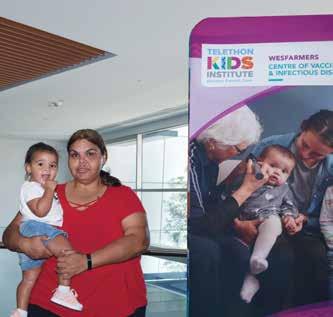
Val says she feels hopeful about the support the program receives from organisations like Austal.
“Not long after his surgery, I heard him say that threeletter-word ‘mum’. I can’t even explain what that felt like for me and he kept getting better because he could finally hear.” Jahkye’s mum
“I hope Austal Ships knows just how much they’ve done to help the kids in the community have a better start to life. I’m seeing change. And that keeps me going.”

In the last edition of Together, we shared the story of one of Telethon Kids Institute’s founders, Professor Fiona Stanley. Now, we continue the story with another of our founders — Emeritus Professor Wayne Thomas.
Wayne fundamentally impacted the cause and treatment around one of the most common allergens facing kids in Australia and around the world.
That is, defining the house mite allergen. It’s estimated that around 90 per cent of asthmatic children in Australia have a dust mite allergy. And yet less than one per cent of this organism — imperceptible to the human eye — causes the allergen. They’re tiny but mighty little critters, it seems.
Finding exactly what it is that the mite produces was the key to unlocking both cause and treatment. The molecular studies Wayne undertook provided critical knowledge for the development of new understandings of allergy and new diagnostics and therapeutics.
Although he would have much preferred to remain with his head down over a microscope, focussing on his work, Wayne took the time to have a chat about his work and life.
Born and raised in country Western Australia, Wayne as a young boy knew a future in science was ahead of him.
When asked what his dreams about a future career would be, he responds with one word. ‘Microscopes’.
“I just liked the pictures, the pictures of people looking down a microscope. I wasn’t a budding young scientist, anybody who got involved in schoolboy science,” he says. Instead, Wayne was more interested in playing outdoors and swimming.
Nonetheless, he graduated with a PhD from the University of Western Australia in 1974 and undertook postdoctoral studies on antigen presentation and the cellular and cytokine responses regulating contact hypersensitivity at the Clinical Research Centre in London and the Walter and Eliza Hall Institute in Melbourne.
After ten years away from home, Wayne joined the Telethon Kids Institute at its inception in 1990, when it was just a small cohort of researchers established out of Princess Margaret Hospital.
Leading the Division of Molecular Biotechnology, Wayne pioneered the use of recombinant allergens for investigation.
Recombinant DNA technology provides the means for producing molecules that mimic the properties of the natural allergens and can be used to diagnose and develop desensitisation therapy for allergic people. It has enabled many investigations to help us understand how the allergy develops and how it causes disease.
Laboratories elsewhere in the world have used many of these same strategies to move forward with the cloning of pollen, cat, cockroach, fungal and other allergens.
Back when Wayne entered the field of allergens, several laboratories had started to define the substances that the mite made to cause allergy and determine the chemical structure. However, progress was almost at a standstill because they could not be isolated in the quantities required for protein chemistry available at the time.
Wayne’s allergen discoveries and developments centred on a new approach that became
available in the early 1980s. It was to isolate the genes that contained the genetic blueprint for proteins (their amino acid sequences) instead of purifying the proteins themselves in a process called molecular cloning.
For this, the genes of the mite were separated and propagated in different colonies of bacteria. This enabled two very important processes — namely the use of DNA sequencing to read the genetic code to identify the proteins encoded by the gene and to make the bacteria produce the protein from the gene in endless quantities (called recombinant proteins or allergens).
"The first house dust mite allergen that I examined in this manner was recognised to be an enzyme that the mite used to digest its dinner,” Wayne explains. “The second was a protein of then unknown function but now known to be critical for immunity to infection."
They were the first major allergens identified from any common source and soon became a subject of undergraduate textbooks.
When asked what it feels like to know he’s impacted research worldwide, Wayne says it’s very satisfying to do a substantive piece of work that other people can build on.
“I sort of became famous for being the person who introduced DNA technology to allergy research, and to do the house dust mite research, which worldwide, has become the most important allergy associated with asthma,” he says.
“But having said that, if I’d gone away for six months, someone else would have done the same thing. I was lucky.”
After about five years spent identifying the source of the allergen, clinical studies began. And these went on for something like 20 years — and they’re still going in one form or another.
Wayne says he just loves to research and, even though he is officially retired, he couldn’t imagine doing anything else.
That’s why you can still find him in the Institute most days, at his desk or checking on his farm of dust mites.
“I just enjoy that continuous puzzle solving. You just move along with that puzzle and look at it every day,” he says.
They say breakfast is the most important meal of the day — and in Merredin, it’s never been truer! Adam Elliott from CBH has been BBQing his way to fundraising success with his second annual cooked breakfast to raise money for Telethon Kids. Adam first hosted his breakfast in December 2019 and then again in 2020, in loving memory of Lucy DeLuis, whose family lives in the tight-knit Merredin community.
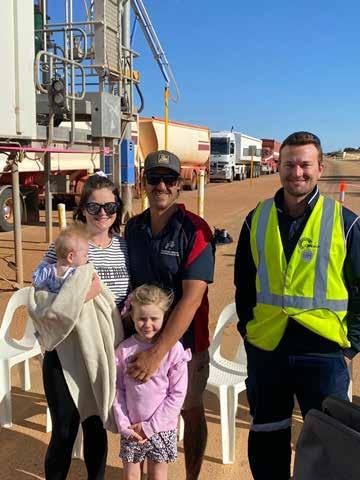
Little Lucy sadly passed away at the age of two from the flu. Adam wanted to support Telethon Kids’ research into preventative vaccines for types of influenza and in his second event helped raise over $3,000 for the cause, with CBH chipping in too. We applaud the effort to remember a dearly loved member of the community and raise funds in her honour.

To find out more about how you can make an impact on child health research, visit giving.telethonkids.org.au
The smiles in the photo are warm and broad.
Respected Elders from the Pilbara and Perth meeting for the first time. But behind that clear goodwill, is serious business.
Elders from the Hedland Aboriginal Strong Leaders (HASL) group have flown to Perth for a “boss to boss” meeting that will determine the future of an ambitious research partnership.
If they are to be involved, they set out the clear criteria they want met.
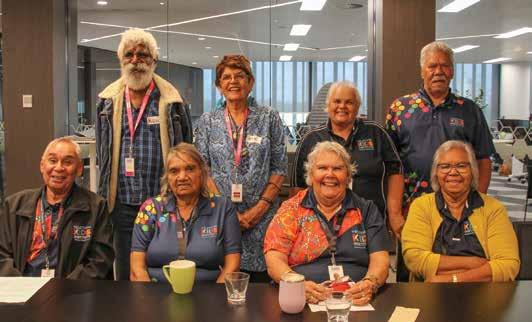
HASL Elder Maureen (MK) Kelly explains.
“We want to see outcomes. We want to see our kids safe, healthy, and educated. We want them to live and not be a suicide statistic – that’s our vision,” she says.
“We need concrete data that can show the lives we live every day so we can get the changes that we need.
“For that, we want to make sure it’s done properly with Aboriginal culture and decision making. We have to have equal footing, and that it’s not others making the decision from Perth, or Canberra or anywhere else.”
Made possible through major funding from BHP, the research will initially be undertaken with three communities: Port Hedland, Newman and metropolitan Perth.
Working together with the Aboriginal community and leaders, services and policymakers, the initiative will work directly with Aboriginal families to understand what is working and what is not - to ensure the best possible early childhood outcomes, even when faced with profoundly difficult and disadvantaged circumstances. First on the visit’s agenda, a welcome and discussion with Perth Elders.
Since 2016, the Elder Co-Researchers have been part of the Ngulluk Koolunga Ngulluk Koort (Our Children Our heart) Project, focussed on improving improve outcomes for young Aboriginal children and families.

Ngulluk Koolunga Ngulluk Koort Elder Aunty Millie Penny was at the meeting.
“It was good to meet with the Elders to discuss and exchange knowledge and ideas from both our respective Noongar and Pilbara cultures.
“We respect and understand the differences in protocols and customs whilst also acknowledging that we have the same commitment and drive for the betterment of our children, families and community, and love that it is the beginning of new connections, friendship and working together.”
Elder Maureen (MK) Kelly agrees. She says the meeting with the Ngulluk Koolunga Ngulluk Koort Elders is a confidence boost that there will be genuine involvement in the partnership.
“We were impressed by the Elders’ dignity and the way they delivered their message. They are involved in major activity, not just sitting there.
“As I say, we are not the bride and groom on the top of the wedding cake, we want to be part of the wedding cake!”
Next up, a meeting with the research project team headed by Aboriginal leaders Glenn Pearson, Professors Juli Coffin and Alex Brown, and the Institute boss, Director Professor Jonathan Carapetis.
“The HASL Elders made their frustrations really clear. The research project has to deliver not just data or a set of recommendations, but real change,” Jonathan reflects.
“We couldn’t agree more. No-one is better placed to know what the major problems are or are more invested in the outcomes than the community itself. Our role as researchers is to work together with them to generate the evidence to help them make a real difference, and then to stand with them to advocate for what’s needed, and that’s what we’ll do.”
The Hedland Aboriginal Strong Leaders Elders had the answers they’d sought. On their return to Port Hedland, they agreed for us to work together.
Graciously, they have given the research partnership a name in Kariyarra language: Kumabarniku which means “all together in one.”
It could not be more perfect.
At Telethon Kids, we love to share our research and learnings with those who need it most. We hosted an evening of chatter and teaching at our Institute in February, where consumers and donors met with some of our respiratory researchers at the inaugural Wal-yan Respiratory Research Centre Consumer Evening.
Hosted by Wal-yan Centre Director Professor Steve Stick, the event featured six short presentations followed by a more informal style of Q&A, where attendees could ask questions of the researchers one-on-one or in small groups. The presentations covered topics such as possible alternative treatments for kids with cystic fibrosis; using artificial intelligence to get new medications to children faster; understanding how asthma develops; the research being undertaken in Aboriginal communities on wet cough; and perspectives from consumers on the value of participating in research.
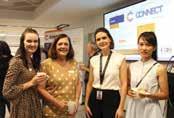

If you would like to learn more about our research or participate yourself, visit telethonkids.org.au/CONNECT

Rob Meney, Past District Governor of Lions District D201W1, leads the annual RazzMaTazz event, an entertainment extravaganza exclusively created for disadvantaged children and sponsored by local businesses.
Like many events in 2020, RazzMaTazz had to be reimagined into a new form, but one thing stayed the same: bringing smiles to lots of children and donations to children’s charities like Telethon Kids. A huge thanks to Rob, Lions District D201W1, and RazzMaTazz volunteers and sponsors. Your continued support is so valuable.
To find out more about supporting Telethon Kids, go to giving.telethonkids.org.au
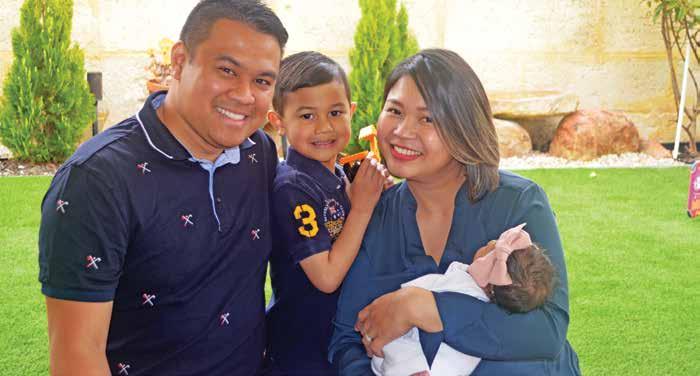
When expecting mum Hannah Castillo was invited to join The ORIGINS Project before the birth of her second child, Hope, she didn’t need to give it a lot of thought.
“My husband and I both have an interest in research, so taking part in a landmark study really appealed to us,” she said.
“Contributing to the future health of kids and adults in our own small way, is something we feel proud of.”
The ORIGINS Project is a unique, comprehensive research project and the largest study of its kind in Australia that follows the progress of pregnant women, their partners and babies for the first five years of the baby’s life. As a collaboration between Telethon Kids and Joondalup Health Campus, the project comes after an increasing understanding that an individual’s lifetime health and disease may be programmed at a very early stage – while a child is still in the womb.
Through the project, researchers collect detailed information on how a child’s early environment and parents’ physical health and genetics influence the risk of a wide range of diseases and conditions such as asthma, eczema, food allergies, hay fever, diabetes, obesity and autism.
With an ambition to follow 10,000 families over a decade, the project just recently welcomed its 5,000th family on board. The data and biological samples being collected from these 5,000 families are creating a rich resource that will inform future research translation, while also being able to give families results for the present day.
Because, while the overall aim of The ORIGINS Project is to analyse these samples and data to inform the causes of chronic conditions — the real-time feedback provided to families through free, regular assessments and sample collection provides an opportunity to intervene early in conditions that otherwise might not have been picked up until much later in life.
“I am a bit of a paranoid mum, so the idea of receiving the results of our assessments and all the additional feedback on Hope’s development is really reassuring,” Hannah remarked.
Hope is a little sister for five-year-old Liam, who was Hannah’s introduction to the endless worrying of motherhood.
“It means we have the opportunity to rule out, or quickly intervene, with any health issues that might show up as she grows,” she continued.
Co-director of The ORIGINS Project, Professor Desiree Silva, said the fact that the information gathered will be used by researchers all around the world, as well as here in WA, to answer questions about the development of noncommunicable health conditions is really exciting.
“We want to learn more about why there is so much ill-health; why do some kids develop allergies so early, while others don’t; why do they get asthma so early?” Professor Silva said. “There are also concerns around cognitive and language development for a lot of families, so we would like to understand what is causing it and then, in turn, try to find out how to best treat it.”
A unique aspect of The ORIGINS Project is that researchers are not just following participant families but are also providing realtime feedback and then early intervention if something is identified. Free paediatrician appointments at one, three and five years of age, as well as online questionnaires and assessments, can identify developmental issues that range from speech and language delay through to early indicators of cerebral palsy.
“The questionnaires we have been completing online ask all sorts of questions about our health, lifestyle and Hope’s activity and behaviours,” Hannah said. “I find it fascinating that this information can help researchers learn more about the development of disease and chronic conditions.”
“What else would I have done with my placenta at birth, so if it can be useful to researchers, then I am very happy for ORIGINS to use it.”
Researchers are also conducting sub-projects to focus in more closely on specific conditions, exploring a little deeper into health issues such as peanut and egg allergies, the mental health of mothers, wellbeing in families, and the early development of asthma.
Families then have access to further free assessments and feedback about their child’s development if they choose to also be involved in an ORIGINS sub-project.
“It is exciting to recognise that a small community here in the Joondalup/Wanneroo area is actually going to make such a global difference in the long term,” Professor Silva said. Hannah and husband Lloyd agree, but say that they feel they are getting back just as much as they are giving.
“I truly feel the benefits of being part of ORIGINS are going to outweigh the time we will need to invest in it,” Hannah said. “The free paediatric check-ups, the allergy tests and access to specialists are all great perks and provide us with real peace of mind.”
The ORIGINS Project is the largest study of its kind in Australia, 10,000 families over a decade to improve child and adult health.
More than 200,000 biological samples in the ORIGINS Biobank tissue stored from more than 1,000 placentas more than 7,500 stool samples from Mums and bubs and following More than 12 million data points in the Databank including
The 200,000 biological samples are estimated to grow to at least 700,000 individual samples by 2027.
When Shannon Simpson was a just a kid growing up on a farm in Avenel in Victoria, one of the family’s horses died. While this was a sad occasion, it just might have been one of the catalysts for her future career.
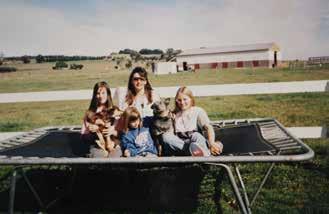
Shannon, now Associate Professor at Telethon Kids, was an inquisitive kid. Over that summer holiday, she decided to collect the horse’s bones — then clean and put them all back together so that they would once again become a horse skeleton.
“That was my summer project. My step-dad gave me a veterinary book, and I just used that to work with, to put it back together,” she said. “I guess I had this research, science, inquisitive thing going on.”
Not every child has such a hands-on experience to whet the scientific appetite that will one day become a fully fledged career. Then again, not every child walks a journey quite like Shannon.
“I had this mission to change the world, from the time I was young,” she said. “I didn’t know how I would do it. I thought maybe I’d be a doctor who would immunise people in developing countries or that I’d end global poverty. Some kids think about this stuff. I was that kid.”
From an early age, a deep altruistic drive meant Shannon wanted to give back however she could. Raising money for the local children’s hospital or bushfire appeals; volunteering as a paramedic for her tight-knit community; teaching and mentoring her students in the
martial art Kali Sikaran. She always involved herself with projects that led to the betterment of something or someone.
Later, after being diagnosed with breast cancer just a year out from finishing her PhD, Shannon turned to volunteering for the Warwick Cancer Foundation and later Telethon Adventurers and the Pirate Ship Foundation. It seems, even during her hardest battles, Shannon has always felt a keen sense of community.
“It’s part of my philosophy,” she said. “We’re all in this together. If you have the means to make something better for someone, then you should.”
Ultimately, it has been that philosophy that saw Shannon dedicate her life’s pursuits to making the world better for others, all in the name of clinical research.
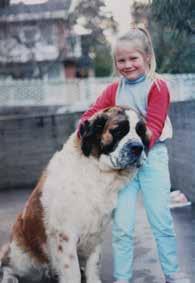
While her first foray into studying science was with a mission to become a veterinarian, the lure of and love for research and clinical work ultimately led to clinical research of a more human nature.
Shannon moved to WA in 2010, with plans to live overseas having been put aside after her cancer diagnosis. Joining Telethon Kids was an unexpected but welcome opportunity.
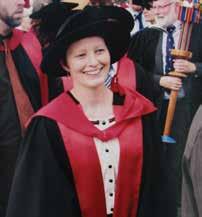
“These babies are extraordinary. They have an amazing ability to fight through adversity and get to the other side. Working with these kids to figure out how they can live fulfilling lives is my life’s ambition.”
It seems that these tiny babies fight with the same kind of resilience that Shannon does. In 2013, what was thought to be a martial art injury turned out to be a return of her cancer, this time as metastasis — with a tumour in her femur.
And while doctors told her at best, she would walk with a cane, and certainly never train martial arts again, Shannon found something within to prove her fighting spirit by getting not one black belt, but two.
Fighting cancer twice has not only taught Shannon a lot about herself, her life and other people, it gave her an insight into the hospital experience that is shared by so many of the children she works with. And you can sense the compassion — and passion — that she has for these kids.
“It’s really guided the way interact with patients and families,” she said. “When you go through something like this you get a bit of perspective. You see that when you look at somebody else you don’t really see what they are going through, so you come at it from a place of asking questions and treating that person with empathy and not judging their situation but really just trying to understand it.”
Shannon’s life ambition is to help conquer the unknowns of respiratory health in children; to stop lung disease in premature babies and then reverse it. And she is so grateful to the community that gives to the Institute, knowing the immeasurable support it offers researchers like herself.
“Without a doubt, I couldn’t do what I’m doing without what we call unconditional giving, which is giving that allows Telethon Kids to direct the donations where they’re most needed, from people who are really backing our work,” she reflected. “I was deeply moved when I discovered people were giving to the Institute to support our research. It provides me a drive to ensure my work lives up to their belief in our ability to change lives.”
Over 1,000 Year 7 and 8 students from Churchlands Senior High School laced up their running shoes in April for their annual 5km Fun Run raising money for the Wesfarmers Centre of Vaccines and Infectious Diseases. Students begun fundraising for the Centre in 2015, totalling an impressive $30,000 raised over the past five years.

The money raised has allowed the Centre to further its research into developing world-first vaccines for respiratory syncytial virus and group A streptococcus, evaluating meningococcal vaccines to ensure high-risk age groups have maximum protection, and finding new treatments for children with middle ear infections.

Now as head of the Children’s Lung Health team at Telethon Kids, Shannon is researching prematurely born babies and their respiratory health as they grow.
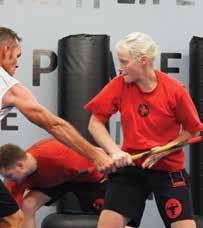
“With unconditional giving, I have the freedom to pursue the most ambitious, innovative ideas that traditional grant funding doesn’t cover.”
They’re the ideas that create impact and change kids’ lives not just here in Western Australia but around the world.”
We love to see the community getting behind our child health research! It means you're a big part of our mission to help kids lead happy, healthy lives. If you'd like to find out more about hosting a fundraiser, head to giving.telethonkids.org.au
To help support researchers like Shannon, please visit giving.telethonkids.org.au
She is one of those bright sparks that always has the ability to bring a smile to her co-workers' faces. Before coming to work at Telethon Kids, Sistha worked as a primary school teacher. After studies at Curtin University, she swapped the blue skies of Perth for England’s greyer-hued variety, where she studied her Masters in Childhood studies and continued her teaching career in Leeds where she was a Science Subject Leader.
This makes us incredibly fortunate to have a passionate, highly skilled teacher as our activity coordinator for the Institute’s schools program. Sistha not only brings her organisational prowess, skills and knowledge to the program, but also her experience in organising science excursions and incursions for students.
Sistha’s main role is organising and coordinating school excursions to Telethon Kids along with holiday workshops, and activities for kids on special days and celebrations. She’s currently running a pilot schools program which sees students in years 3-6 visiting the Institute for a 2-hour excursion where they learn about science and health research.
Sistha said: “What makes our excursions so unique is the fact that the sessions are delivered by actual Telethon Kids researchers, so I do a lot of coordinating between our researchers and the teachers at the schools, to ensure that the sessions match each researcher’s availabilities, skills and areas of interests.”
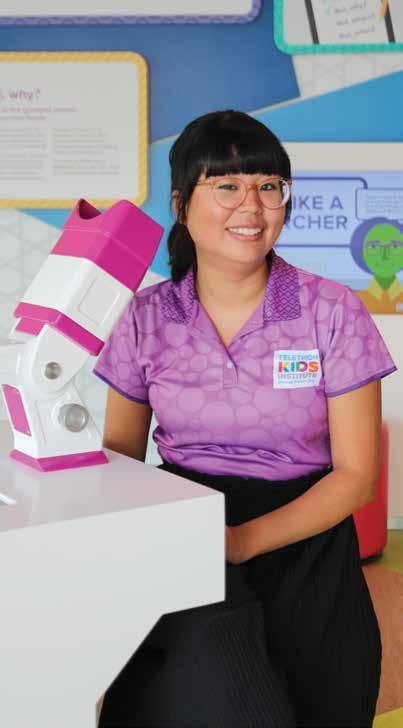
The Telethon Kids Discovery Centre schools pilot program inspired over 1,500 Western Australian kids from 23 schools last year. And it’s running once again, in 2021. This highly popular program was booked out for Terms 1 and 2, with opportunities remaining for teachers to sign up for Term 3 onwards.
Students will be inspired with real-life research, as they conduct hands-on science investigations guided by our very own Telethon Kids researchers. Our educational excursions run for 2 hours and include a guided tour of our state-of-the-art labs with time to explore the interactive Discovery Centre.
Open to students in years 3, 4, 5 and 6, there are various activities that we are trialling in our pilot program, including:
Extracting DNA in strawberries
Measuring the level of glucose in soft drinks to learn about diabetes
Building a lung and making some slime to learn about chronic respiratory illnesses
To book your next school excursion, register your interest via discoverycentre. telethonkids.org.au or get in touch by emailing schools@ telethonkids.org.au

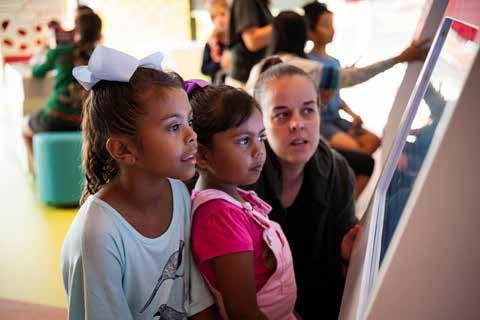
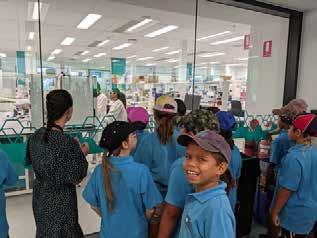 Sistha Halim Activity Coordinator — Schools Program
Sistha Halim Activity Coordinator — Schools Program
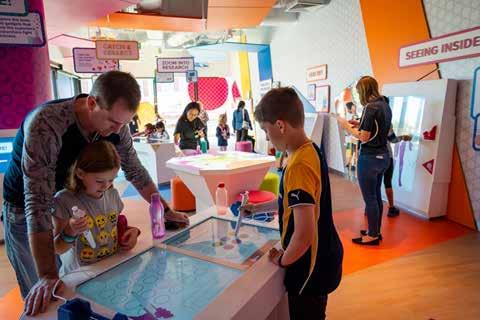
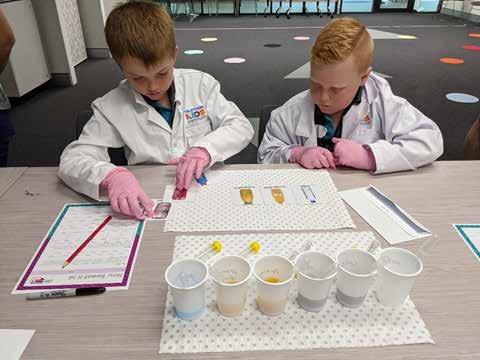
Thanks to Containers for Change, you can reduce rubbish, recycle containers, and donate the proceeds to help fund our research, just like Emily and Lucy, the daughters of our head of Research Development, Tara McLaren.
They cashed in on the program that donates 10c from every eligible container and donated a whopping $408 to Telethon Kids. To join the girls in turning your containers into life-changing research, use our Telethon Kids scheme ID C10336418 at your Containers for Change depot.
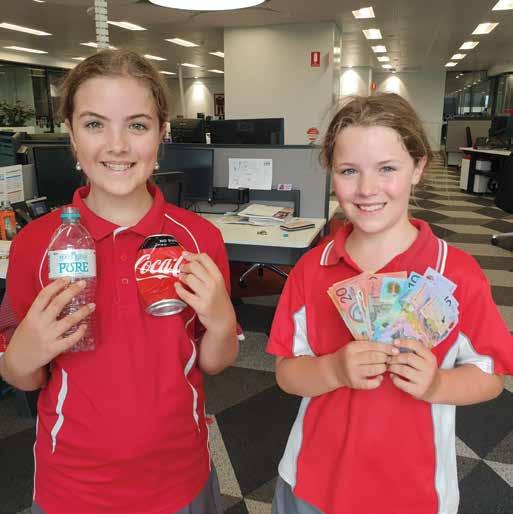
Just use our scheme ID number C10336418 when you return your containers. We’ll get 10 cents for each one. With your help, we can make a change.
Visit containersforchange.com.au to find out more.
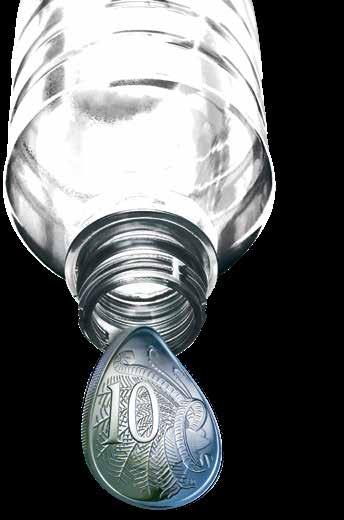
Our researchers recently launched the ‘Hip Hop 2 SToP’ video featuring school kids participating in the SToP trial project designed to see, treat and prevent skin infections in WA’s Kimberley region.
Made in partnership with Aboriginal community members and produced by Broome-based Goolarri Media, the video delivers important environmental health messages to keep skin strong and healthy in a fun and inclusive way.
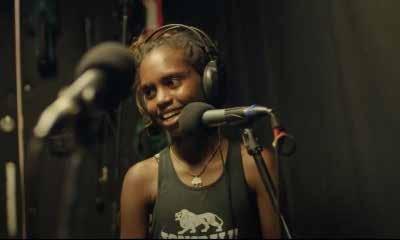
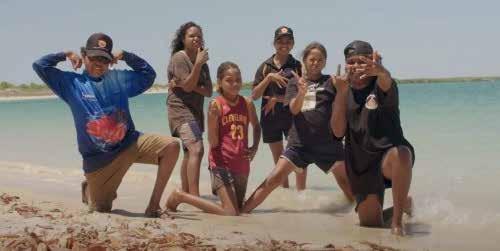
At the beginning the kids were quite shy in front of the camera, but it wasn’t long before they were choreographing their dance moves and busting to have a turn on the microphone!
To watch the video, search for ‘Telethon Kids Institute Hip Hop 2 SToP video’ on YouTube.
Congratulations to four of our outstanding researchers named finalists in the 2021 Western Australian of the Year Awards.

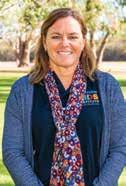
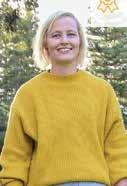

Professor Jonathan Carapetis AM (Professions Award) in recognition of his role as a world-leading expert on Strep A infections and rheumatic heart disease, his commitment to Aboriginal health, his leadership in the medical research sector and in providing a reassuring voice for the community throughout the COVID-19 pandemic.
Professor Juli Coffin (Aboriginal Award) in recognition of her outstanding and creative leadership in enhancing the lives of Aboriginal children and young people.
Dr Shannon Simpson (Community Award) in recognition of her internationally respected work in preterm lung health and her passionate community volunteering work.
Dr Hayley Passmore (Youth Award) for her work in helping to improve outcomes for some of WA's most vulnerable young people in the justice system and who have neurodevelopmental impairment.
Northern Entrance, Perth Children’s Hospital, 15 Hospital Avenue, Nedlands WA 6009
PO Box 855, West Perth Western Australia 6872
T | 08 6319 1000
E | contact@telethonkids.org.au
W | telethonkids.org.au
PRINCIPAL PARTNER